Melbourne’s third oldest golf club has had several incarnations during its celebrated history. But never has the overall golfing experience been as good.
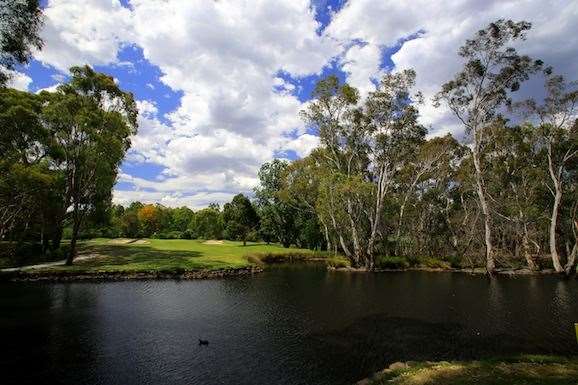 A beautiful billabong separates the tee and fairway at the par-3 4th.
A beautiful billabong separates the tee and fairway at the par-3 4th.WORDS & PHOTOGRAPHY: BRENDAN JAMES
For 122 years, Melbourne’s Kew Golf Club has been a significant part of Victoria’s golfing landscape.
The club was formed in 1894 and its first course was laid out on leased land about a kilometre south of current Kew layout. Within a few years the course was extended and as it grew so did its popularity as influential members of the community including politicians, clergy, academics and sportsmen – like Australia’s first Olympic gold medallist, Edwin Flack – joined the club.
But just two decades into its existence, residential spread east of the Melbourne CBD reached the course’s boundary and the club lost much of its land to a housing sub-division. The club bought 92 acres of adjoining land in 1922 and extended its course once again, but urban sprawl would again come calling. In 1960 the club was notified it would lose part of its course to the proposed Eastern Freeway. Over the next 15 years, the club’s members endured two further land purchases and major course redesigns to accommodate the loss of holes to an expanded freeway.
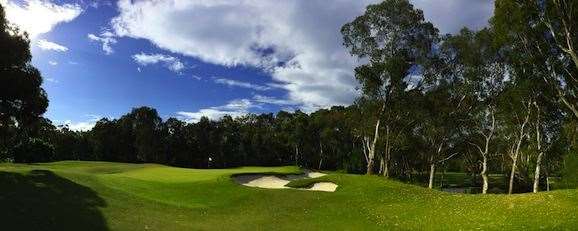 The approach into the par-3 14th hole was significantly changed by Grant.
The approach into the par-3 14th hole was significantly changed by Grant.These developments saw Glass Creek and the meandering Yarra River incorporated into the layout, which obviously provided the benefit of a picturesque setting but also the problem of drainage.
Kew has long been regarded as one of Melbourne’s best clay belt layouts, but like all the courses to be found within close proximity to the Yarra River and its tributaries east of the city, drainage has always been a concern, especially in winter. My first experience of Kew was about 10 years ago and I recall being impressed by the setting but found it a real slog in heavy conditions about a week after some substantial rain.
Thankfully, the club recognised the problem and four years ago embarked on a multi-million dollar redevelopment of their course and commissioned course designer Graeme Grant to generate a masterplan that would not only address drainage issues but also improve the overall layout.
 Mature native trees come into play on many holes like the par-5 12th.
Mature native trees come into play on many holes like the par-5 12th.Grant redesigned and built eight new holes – the 1st, 3rd, 8th, 12th, 14th, 15th, 16th and 17th holes – while overseeing the conversion of all the fairways and greens surrounds to Santa Ana couch grass, and the greens to bentgrass.
But arguably the most important work carried out by Grant, which was completed early last year, involved improving Kew’s drainage issues. An extensive drainage network was added, while above the ground a significant amount of work was done on contouring fairways and creating run-off undulations to channel water to drains placed away from playing lines. This effectively killed two birds with one stone as it has created better, healthier playing surfaces as well as adding to the challenge of hitting quality approach shots and greenside recoveries from a variety of lies.
Kew’s new holes have not added any significant amount of the length to the par-72, which is long enough for a member’s course at 6.179 metres from the back pegs. However, Grant has successfully made it more testing of your course management skills with the addition of fairway bunkers, greenside swales and angled putting surfaces.
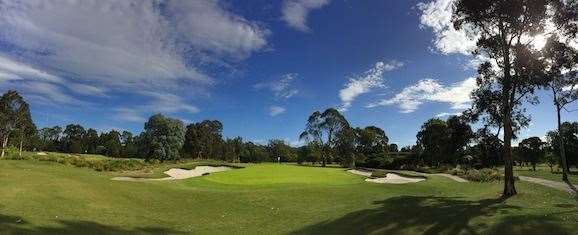 The green and its surrounds on the par-4 17th is a fine example of Grant’s new work.
The green and its surrounds on the par-4 17th is a fine example of Grant’s new work.For example, the par-3 14th is 172 metres from the back tees so a long iron or hybrid is required to cover the distance for many, while better players will be able to go at the green with a highly struck mid-iron. Different shots, different challenges and each have been accommodated into the design of the hole.
“Like any of the holes, we tried to set them up so that average golfers, better golfers, and the ladies … all the golfers of the club have a certain challenge when they play the hole,” Grant said.
“So with this one at 14, we left the opening to the green quite wide and for players who want to run their shot in, there is a little slope there that will run the ball onto the green. For better players, there’s the challenge of carrying the bunker and trying to get close to the pin.
“The green is angled so that any player taking on the bunker, who hits offline or too strong, will miss the green and their ball will feed off into a swale at the back of the putting surface.”
The bunker fronting the green at the 14th is a fine example of the natural bunkering look Grant has introduced to the Kew layout and will become more established as they mature.
“We’ve tried to leave the bunkers with a natural sort of look,” he said. “I hate to see formal or symmetrical lines of bunkers on any golf course, so my work has always been to try and keep the bunkers as natural as possible.”
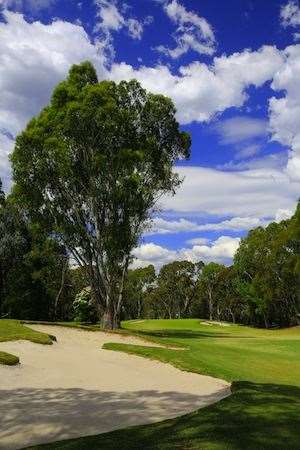 Kew's long par-4 3rd hole is a real test of length and shot placement.
Kew's long par-4 3rd hole is a real test of length and shot placement.My only other visit to Kew, before playing a round for this article, left me with the impression that despite its beauty it was an underwhelming second-shot course, where I felt like I was reaching for the same one or two clubs all the time and all I had to do was hit a straight shot from a relatively flat lie. This no longer applies and thinking your way from tee-to-green is a necessity.
One prime example of this is the 361-metre dogleg right par-4 15th hole, which is no longer simply conquered with a driver and short iron. The fairway has been widened slightly and two bunkers inside the dogleg have been renovated, while a bigger third bunker has been positioned further up the fairway to the left. Big hitters can certainly try and carry the bunkers on the right but if they are slightly offline the third bunker will grab them. The conservative play, however, laying up short of the bunkers leaves a longer, more complicated approach into the green.
Grant’s redesign has significantly elevated Kew to be an enjoyable and challenging test for players of all standards.
The ‘new’ Kew now asks plenty of questions of your ability, which I really enjoyed.
And even if my golf was not up to answering these questions with any great success, the walk around this gorgeous layout – just 15 minutes’ drive from the city – was memorable enough as I played alongside water hazards brimming with birdlife, of which there are more than 100 species to be found.
FACT FILE
THE COURSE
LOCATION: 120 Belford Rd, Kew East, Victoria.
CONTACT: (03) 9859 6848.
WEBSITE: www.kewgolfclub.com.au
DESIGNERS: Bob Green (1974); Graeme Grant (2015).
SLOPE RATINGS: Men 130/127/124/113; Women 127/120/118
PLAYING SURFACES: Santa Ana (fairways), bentgrass (greens).
COURSE SUPERINTENDENT: Cameron Hall.
PGA PROFESSIONAL: Simon Angliss (head professional), Vernon Gunson (teaching pro), Michael Light (teaching pro).
GREEN FEES: Kew is a private course open to members and their guests. There are limited tee times for international and interstate visitors, who must present a letter of introduction and handicap confirmation on application.
 Kew’s clubhouse offers commanding views of the course, especially the par-3 18th hole.
Kew’s clubhouse offers commanding views of the course, especially the par-3 18th hole.THE CLUB
MEMBERSHIPS: Opportunities for membership are now available for seven and six days, corporate and junior categories. See the club’s website for further details.
RECIPROCAL CLUBS: The Brisbane GC (Qld); Bonnie Doon GC, Killara GC (NSW); Yering Meadows, Rosanna GC, Latrobe GC, Green Acres GC, Heidelberg GC (Vic), The Grange GC & Mt Osmond GC (SA), Mt Lawley GC, Royal Fremantle GC (WA), Royal Hobart GC (Tas).
FACILITIES: Kew has a practice fairway and a team of teaching pros to help hone your game. The Kew clubhouse is well-placed to host conferences, seminars, functions and weddings.
CORPORATE DAYS: The course is available on Mondays and Fridays for corporate bookings, from 20 to 128 players.
Related Articles

Course Review: Cape Kidnappers
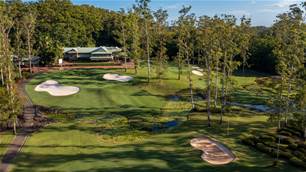
Review: Bonville Golf Resort











